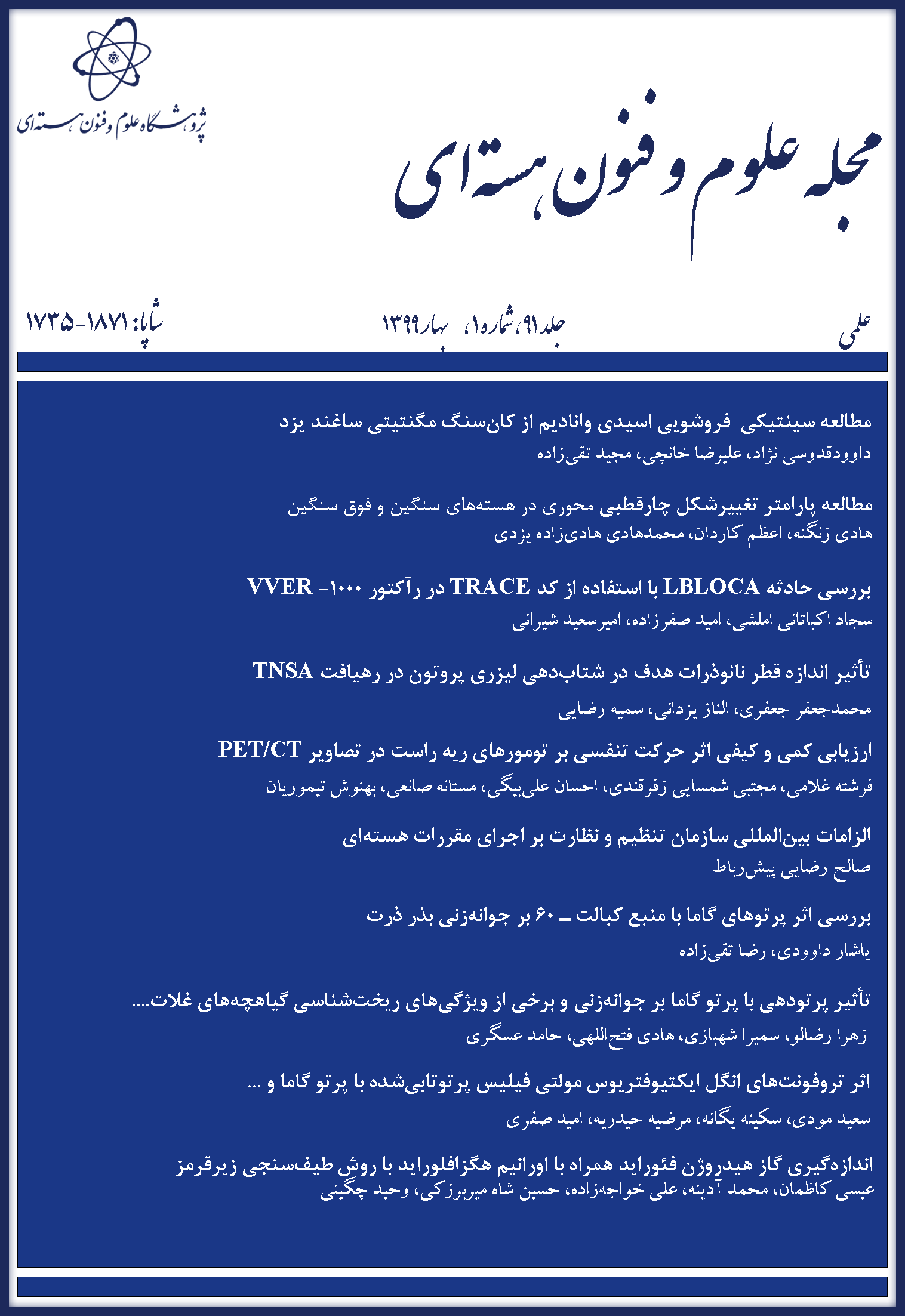نوع مقاله : مقاله پژوهشی
نویسندگان
پژوهشکدهی پلاسما و گداخت هستهای، پژوهشگاه علوم و فنون هستهای، سازمان انرژی اتمی، صندوق پستی: 51113-14399، تهران- ایران
چکیده
در این مقاله، تأثیر شیب چگالی پلاسما بر تولید ذرات پرانرژی و پراکنش تپ درون پلاسمای کمچگال برای دو تپ کوتاه و بلند و با استفاده از کد ذره در سلول 1D-3V مورد بحث و بررسی قرار میگیرد. یافتهها نشان دادند که طول تپ لیزر و شیب چگالی میتوانند بر تولید ذرات پرانرژی و پراکنش تپ درون پلاسما مؤثر باشند، به طوری که، شبیهسازی اثر طول تپ نشان
میدهد که در برهمکنش تپ کوتاهتر با پلاسمای کمچگال، الکترونهای پرانرژیتری تولید میشوند. همچنین، از میان سه شیب چگالی
پلهای، شیب تند و ملایم، در پلاسما با شیب چگالی پلهای، الکترونها به انرژیهای بزرگتری نسبت به دو مقیاس دیگر دست مییابند. تحلیل فوریهی طیف تابشی کل نشان میدهد که رشد مدهای الکترومغناطیسی برای پلاسمای با شیب پلهای بیشینه و در شیب چگالی ملایم کمینه مقدار را دارد.همچنین، تحولهای زمانی تابع توزیع انرژی الکترونها و یونهای پلاسما نیز مورد مطالعه قرار گرفت؛ نتیجهها نشان میدهند پرانرژیترین ذرهها (الکترون و یون) مربوط به طول تپ کوتاهتر لیزر و به ازای شیب چگالی پلهای است.
کلیدواژهها
عنوان مقاله [English]
The effect of density scale length on the plasma scattering and heating in relativistic laser interaction with under dense plasma
نویسندگان [English]
- M Pishdast
- S.A Ghasemi
- J Yazdanpanah
چکیده [English]
In this paper, the effect of plasma density ramp and laser pulse length on the energetic particle generation and pulse scattering were investigated in an under- dense plasma for short and long pulse lengths, of τL = 60 fs, and τL = 300 fs, respectively. In our simulations, we used a kinetic particle in cell simulation 1D-3V code. It is found that the laser pulse length and density ramps play an important role on the energetic particles generation and pulse scattering in plasma. So that, the simulations of the laser pulse length impact indicate that, in the case of short pulse interaction with the under-dense plasma, electrons are accelerated to the higher energy level. Furthermore, among the three different ramps: step-like, ramp 1 with a steep slope, and ramp 2 with a gentle slope, in the case of the step-like density ramp, electrons accelerate to high energies, in comparison with two other ramps. A fourier analysis of the total radiation spectrum indicate that in the case of the step-like density profile, the growth rate of the electromagnetic modes have maximum regular picks and minimum growth rate obtained in the case of the smooth ramp. Meanwhile, the time evaluation analysis of the energy distribution function shows that with the time increment of the pulse propagation, in the shorter pulse case, and for the step density scale length, plasma particles can reach a high energy level.
کلیدواژهها [English]
- Plasma density ramp
- Plasma scattering and heating
- Under-dense plasma

